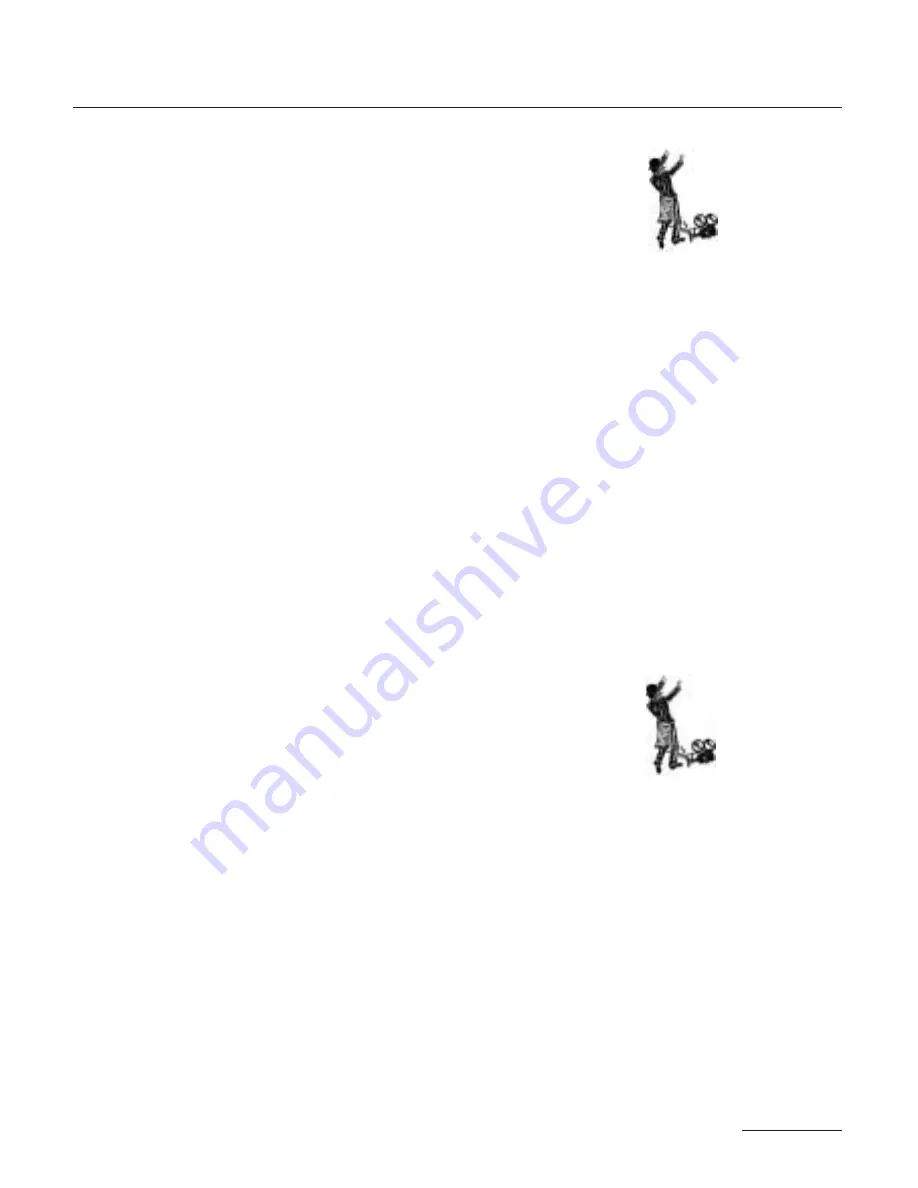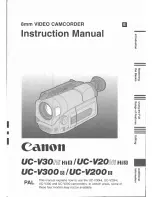
port ring completely free of dirt and debris. Clean this surface, as
well as the threads of the lens lock ring using alcohol or a multi-pur-
pose cleaner applied to a Q-tip.
5.2.3 Camera Gate
The gate should be cleaned of film particles by means of a pointed
wooden or plastic orange stick. The tool used should be of a soft
and pliable enough material (like wood) to conform to the grooved
side channels of the gate without breaking. Make sure to inspect and
clean the left and right channels, the frame of the aperture opening,
the lateral pressure plate, the tip of the claw and the timecode
LEDs.
Afterwards, run your finger across the left and right rails of the gate,
if your hands are clean. The oil from your finger will provide just
enough lubricant for the film to pass these surfaces smoothly. Ins-
pect the gate; if the rails are still dirty or are carrying any debris (su-
ch as the adhesive from recanned rolls of film), with a Q-tip, use a
cleaning fluid that will do the job. Alcohol and lens cleaner are safe
to use on the surface of the gate. Make sure the Q-tip does not leave
any cotton threads behind.
5.3 VIEWING SYSTEM
The following components of the viewing system should be cleaned
whenever dirt particles are visible through the view- finder. Use lens
fluid applied with a cotton or preferably a foam Q-tip for all areas.
By cleaning the viewing system in the order described below, you
will clean the more dust-prone areas first, which may help you track
down most dirt particles sooner.
5.3.1 Viewing Screen
Look through the lens port at the reflection of the viewing screen in
the mirror and check for visible dust particles. Clear the mirror
shutter so that it is rotated safely inside the body by rotating at the
base of the shutter with your finger or by setting the camera to test
77
CLEANING
Cleaning the
Mirror Shutter
Do not attempt to clean the
surface of the mirror shutter;
any small dust particles visible
from the lens port will not
come into focus in your view-
finder. If large particles of dirt
must be removed, do so using
an air syringe. Never use can-
ned air on this surface.
If the mirror is in need of a
deeper cleaning, to remove
smudges or oil, take your
camera to a qualified techni-
cian to be cleaned.
Warning !
Remember, the camera gate is
a sensitive and high precision
area directly responsible for
the exact focus of the image;
be careful not to use hard,
damaging materials (like
metal) on the its surface.
Under no circumstances
should you perform any func-
tion within the aperture ope-
ning, lens port or near the
claw with power attached to
the camera. Accidently run-
ning the camera while perfor-
ming such tasks can cause
serious damage to the shutter
and mechanism
Summary of Contents for XTRprod
Page 1: ...X T R p r o d User s Guide September 2002 ...
Page 8: ...8 ...
Page 9: ...SYSTEM FEATURES AND CONTROLS 9 1 ...
Page 15: ...15 GENERAL OVERVIEW ...
Page 16: ......
Page 17: ...THE CAMERA BODY 17 2 ...
Page 53: ...53 THE CAMERA BODY ...
Page 54: ......
Page 55: ...THE MAGAZINE 55 3 ...
Page 64: ......
Page 65: ...THE AATON SYSTEM 65 4 ...
Page 73: ...73 THE AATON SYSTEM ...
Page 74: ......
Page 75: ...CLEANING 75 5 ...
Page 80: ......
Page 81: ...SUPER16 81 6 ...
Page 93: ...93 SUPER16 ...
Page 94: ......
Page 95: ...AATONCODE 95 7 ...
Page 103: ...103 AATON CODE ...
Page 104: ......
Page 105: ...TECHNICAL SPECIFICATIONS 105 8 ...
Page 108: ...108 AVAILABLE VIEWING SCREENS ...
Page 109: ...109 TECHNICAL SPECIFICATIONS ...
















































